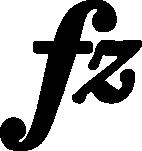




In FE we can see here "zf", which we change to the correct  . We discuss in detail the issue of the Chopinesque notation of forzando and its variants in the sources in the note in bar 1. The symbols introduced by GE and EE were arbitrary attempts at finding the correct substitute for the erroneous FE notation.
. We discuss in detail the issue of the Chopinesque notation of forzando and its variants in the sources in the note in bar 1. The symbols introduced by GE and EE were arbitrary attempts at finding the correct substitute for the erroneous FE notation.
In FE it is unclear whether the indication is supposed to concern the left or the right hand. We assume that it concerns the left hand, as the mark is still over the initial octave, which suits the music better if we take into account the fact that Chopin would use  as an accent. The marks in GE and EE rather refer to the R.H.
as an accent. The marks in GE and EE rather refer to the R.H.
Compare the passage in the sources»
category imprint: Interpretations within context; Differences between sources
issues: EE revisions, Inaccuracies in FE, GE revisions
notation: Verbal indications



 in
in